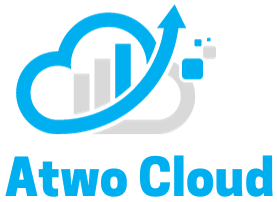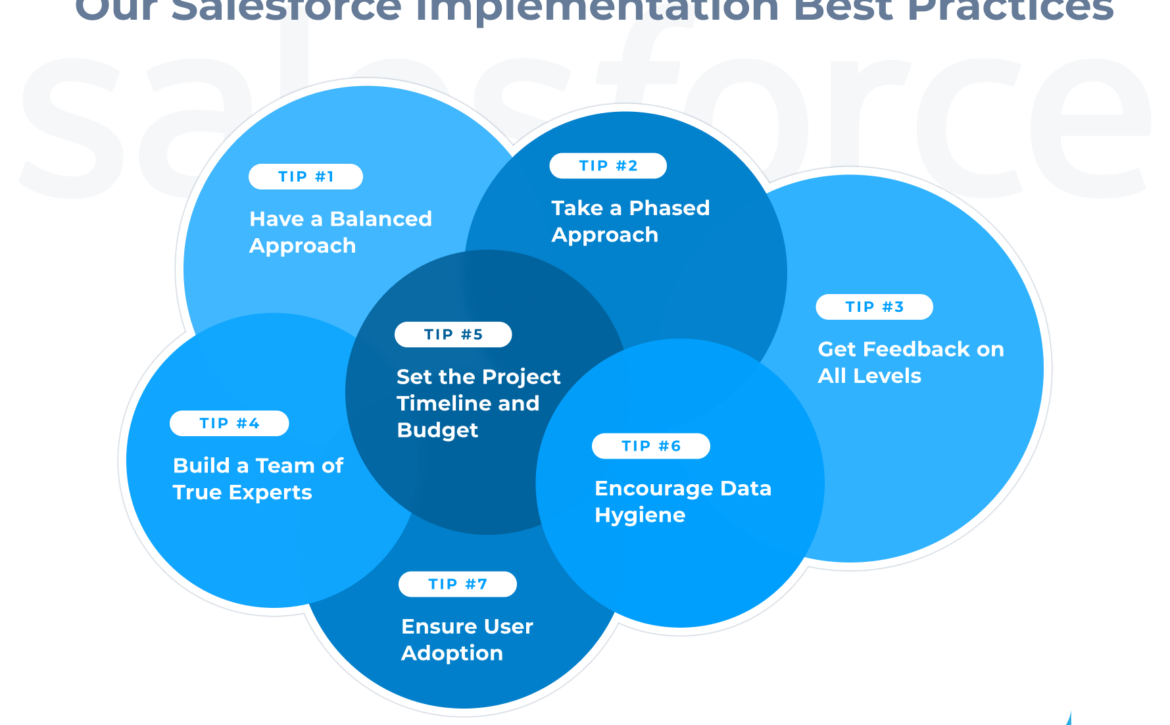Expert Guide to Salesforce Implementation in 2024
A well-executed Salesforce implementation can revolutionize your business operations by streamlining processes, enhancing customer engagement, and boosting efficiency. However, achieving success requires meticulous planning and execution. In this blog, we’ll explore six key steps to ensure a smooth and effective Salesforce implementation in 2024.

Step 1: Establish Clear Goals and Objectives
Before starting your Salesforce implementation, define what you want to achieve. Identify your business’s challenges and how Salesforce can help solve them.
Tips for setting goals:
a.) Develop SMART goals: Specific, Measurable, Achievable, Relevant, and Time-bound.
b.) Align objectives with your overall business strategy and team priorities.
c.) Involve key stakeholders to understand their expectations and critical needs.
By clarifying your goals, you can tailor your Salesforce solution to meet your unique business requirements effectively.
Step 2: Build a Competent Implementation Team
The success of your Salesforce implementation hinges on the expertise and collaboration of your team.
Essential roles for your team:
a.) Project Manager: Oversees the timeline, milestones, and overall progress.
b.) Salesforce Administrator: Manages system configuration and ongoing updates.
c.) IT Specialist: Handles data migration and system integrations.
d.) End-Users: Provide insights into daily operations to ensure usability.
A well-rounded team ensures smooth implementation and accelerates user adoption.
Step 3: Select the Right Salesforce Edition
Available editions include:
a.) Essentials: Best for small businesses with basic CRM needs.
b.) Professional: Designed for growing businesses with moderate complexity.
c.) Enterprise: Ideal for larger organizations requiring advanced customization.
d.) Unlimited: Provides extensive support and flexibility for complex setups.
Evaluate your business’s size, budget, and requirements to select the most suitable edition. This step ensures your investment aligns with your current and future business needs.
Step 4: Plan and Execute Data Migration
Effective data migration is a cornerstone of successful Salesforce implementation. Transferring clean and accurate data ensures the system functions seamlessly.
Steps for data migration:
a.) Conduct a thorough audit of your current data and clean it for accuracy.
b.) Use tools like Salesforce Data Loader or partner with experts for a smooth transition.
c.) Perform rigorous testing to confirm that all data is successfully migrated.
Integrating Salesforce with your existing tools, such as ERP or marketing platforms, creates a unified and efficient business ecosystem.
Step 5: Customize Salesforce to Fit Your Needs
One of Salesforce’s strengths is its flexibility to adapt to your business processes.
How to customize Salesforce effectively:
a.) Configure objects, workflows, and dashboards tailored to your team’s needs.
b.) Leverage AppExchange for additional tools and features.
c.) Automate repetitive tasks with Salesforce’s advanced capabilities.
Customizing Salesforce ensures it aligns with your operations, enhancing efficiency and usability.
Step 6: Provide Comprehensive Training and Drive Adoption
Training is critical to ensuring your team can use Salesforce to its fullest potential. Even the best implementation can fail without proper user engagement.
Strategies for training and adoption:
a.) Offer role-specific training to address the needs of different users.
b.) Utilize Salesforce Trailhead for interactive and engaging learning experiences.
c.) Collect user feedback to identify issues and improve workflows.
Encouraging consistent usage and offering ongoing support will foster higher user satisfaction and productivity.
Pro Tips for Salesforce Implementation in 2024
a.) Stay Updated: Take advantage of new Salesforce features like AI-powered Einstein Analytics.
b.) Focus on Scalability: Plan for long-term growth by ensuring your setup can scale with your business.
c.) Engage Experts: Partner with certified Salesforce consultants for professional guidance and execution.
Conclusion
Implementing Salesforce is a game-changer for businesses looking to elevate their operations. By following these six steps—setting clear objectives, forming the right team, selecting the right edition, planning data migration, customizing the platform, and providing thorough training—you can ensure a successful Salesforce implementation in 2024.


